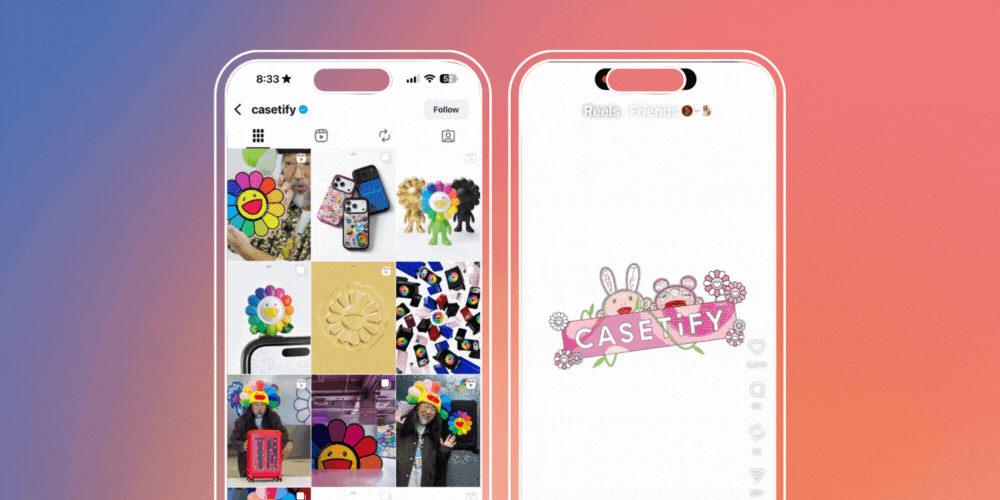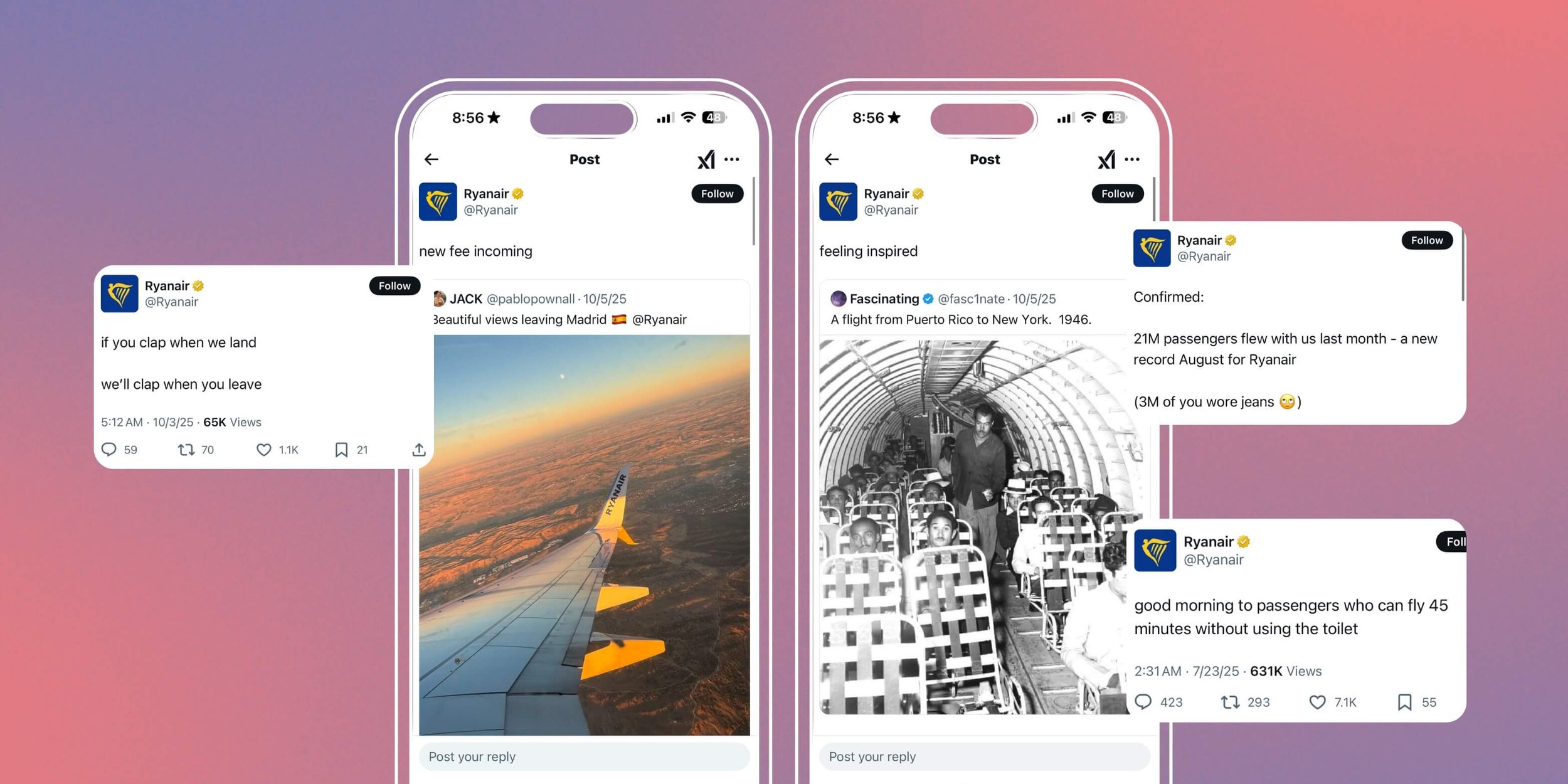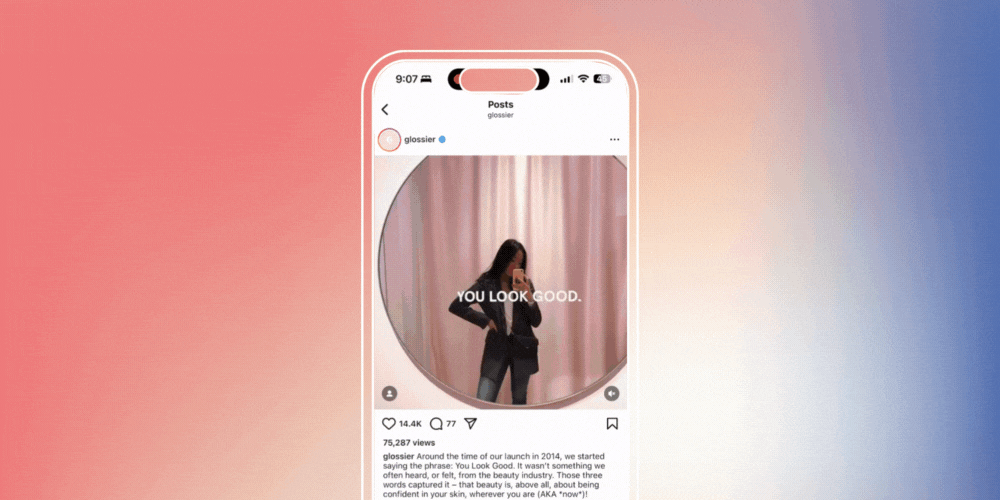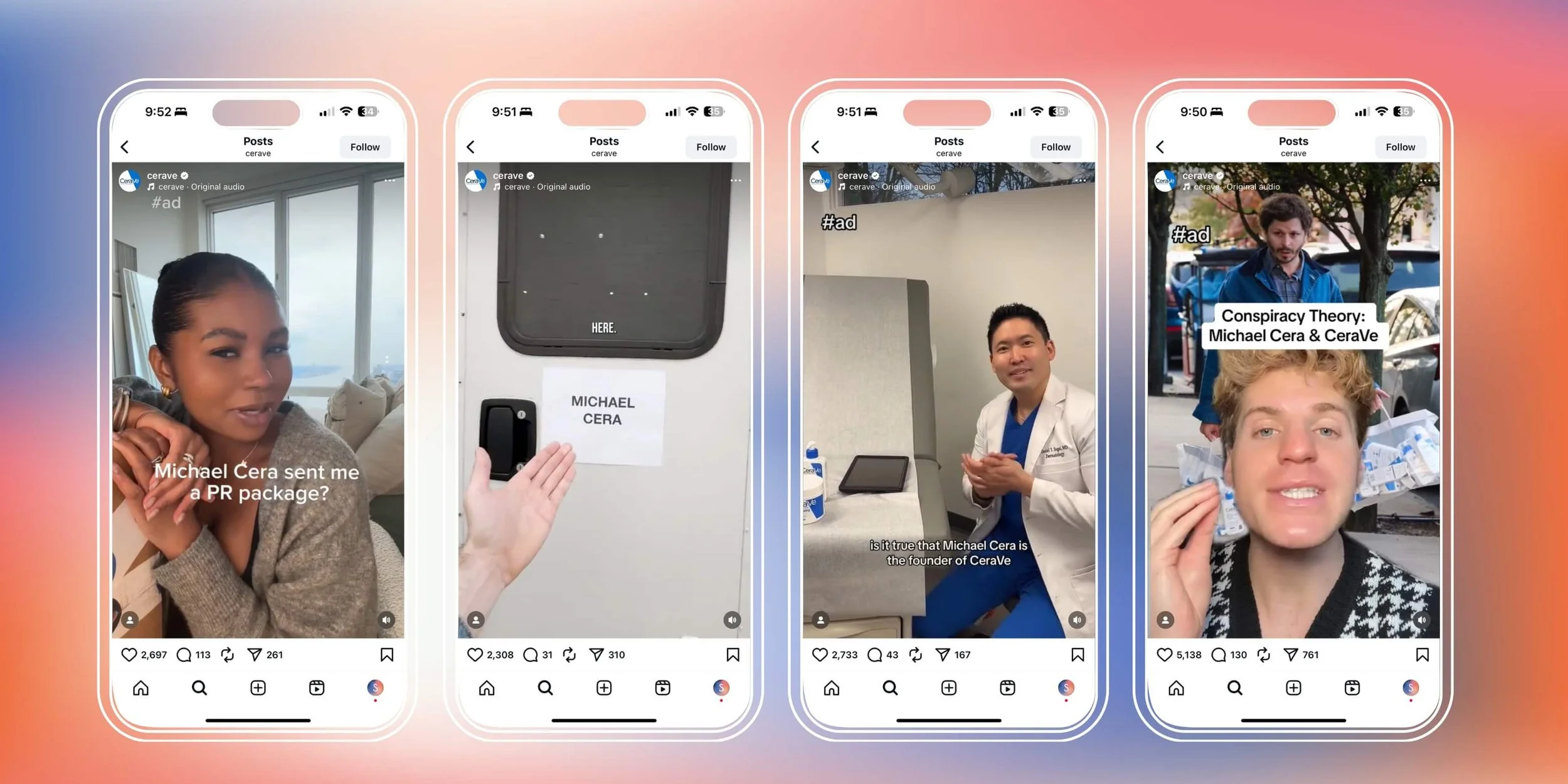16 Social Media Campaigns Examples You Should Steal
Do you remember when:
Social media campaigns meant slapping your logo on a generic quote graphic and calling it a day? Yeah, those days are over, thank goodness. Today’s best campaigns aren’t just pretty posts. They’re strategic, memorable, and actually get people to stop scrolling. Which, let’s be real, is basically a superpower at this point.
So we’ve rounded up 16 social media campaigns examples. Ones that made us pause, screenshot, and immediately text our team, “We need to talk about this.” From brands that posted the same photo twice on purpose. To campaigns that turned summer produce into viral gold. These examples prove that creativity still wins on social.
Why These Social Media Campaigns Examples Actually Worked
Before we jump into the good stuff, let’s talk about what separates a campaign that flops from one that converts. In short, the best social media campaigns examples share a few things in common. Firstly, they’re visually cohesive. Secondly, they tell a story. And last, they have a clear purpose beyond just “posting content”.
A killer campaign understands its audience. It also stays true to the brand’s voice and gives people a reason to engage. It’s not about going viral (though that’s a nice bonus). Above all, it’s about creating content that resonates so deeply with your community. So *deep* that they can’t help but interact.
Social Media Campaigns Examples That Made Us Say “Why Didn’t We Think of That?!”
We’re nonstop analyzing what’s working on social. Because it’s literally our job. The top 16 social media campaigns examples stood out because they weren’t just creative for creativity’s sake. They were strategic, on-brand, and above all, they got results.
1. Natura’s “Two Much Collagen” Campaign
Moreover, sometimes the simplest ideas are the smartest. Natura promoted their new product with 2x the collagen. How? By doing something that would usually make any social media manager panic. They posted the *exact* same image twice in a row on their feed.
In sum, the campaign was equal parts genius and gutsy. It broke the unspoken rule of grid aesthetics. All while *perfectly* communicating their product benefit. It also got people talking in the comments about whether it was intentional. Spoiler: It absolutely was.
How to steal this: Find a visual way to show your product’s key feature. Launching a double-strength serum? Post two identical shots. Selling a reversible jacket? Post the same model back-to-back in each color. In short, make the repetition so intentional that it becomes the message itself. Perfect for 2x, double, or duo product claims.
2. Hum Nutrition’s “Cravings OOO” Campaign
Hum Nutrition turned their GLP-1 supplement launch into a full-blown summer-vacation aesthetic. Complete with pineapples and boarding passes as the hero of every post. The campaign leaned into that carefree, tropical getaway energy. The one we all crave during the summer months.
So what made this work? They didn’t just talk about the product. They also created an entire vibe around it. The pineapple became instantly recognizable as their visual shorthand. Making the campaign memorable long after summer ended.
How to steal this: Choose one signature visual element. One that represents the feeling of your product. Not the product itself. For instance, a sleep supplement could use *clouds*. A productivity app could feature *coffee cups*. A fitness brand could own *sunrise* imagery. Create a visual language your audience associates exclusively with your campaign.
3. Ghia’s “It’s In Our Blood” Campaign
Earlier this year, Ghia launched their blood orange-flavored spritz. And they went all in with their “It’s In Our Blood” campaign. The messaging was bold, the visuals were stunning, and the wordplay was chef’s kiss.
This campaign worked because it didn’t shy away from personality. Ghia’s brand voice is already confident and a little edgy. And this campaign amplified that perfectly while staying true to their sophisticated aesthetic.
How to steal this: Look for double meanings in your product features. For example, a red lipstick brand could use “Paint the Town Red”. Blue light glasses could work with “True Colors”. And a matcha brand could lean into “Whisking You Away.” Make your campaign memorable by finding language that works both figuratively and literally.
4. Double Standard’s “Most Mermaid” Campaign
Double Standard knew *exactly* what they were doing with their mermaid-inspired bikini campaign. “Most Mermaid” wasn’t just a cute tagline. It was a whole summer identity that their audience could buy into.
The campaign imagery leaned into dreamy, underwater vibes. All while still clearly showcasing the product. It gave their community a way to describe the feeling they wanted, not just the swimsuit they were buying.
How to steal this: Sell the fantasy, not just the product. For instance, a loungewear brand could create “Cloud Mode”. A skincare line could go with “Glass Skin Era”. And a coffee company could build out “Main Character Energy”. Think about the aspirational identity your customer wants. Then, make your product the gateway to that transformation.
5. Casetify’s Takashi Murakami Collaboration
Casetify recently collaborated with legendary artist Takashi Murakami. And it was a masterclass in leveraging cultural cachet. The campaign didn’t just announce a product drop. It created an event.
Partnering with an artist whose work already has a devoted following was a great choice. Casetify tapped into a new audience while elevating its brand’s artistic credibility. The campaign visuals were unmistakably Murakami. Thus, every post was instantly recognizable and shareable.
How to steal this: You don’t need a world-famous artist to emulate this. Partner with a local muralist for limited-edition packaging. For example, a micro-influencer whose aesthetic matches yours perfectly. Or a complementary brand for co-branded content. Choose partners with a strong existing audience. They can authentically introduce your brand to new people.
6. Duolingo’s Unhinged TikTok Strategy
Duolingo’s social media presence deserves its own case study. Their mascot, Duo the owl, became a full-blown internet personality. Thanks to increasingly chaotic TikTok videos. One that had nothing (and everything) to do with language learning.
The campaign strategy here is brilliance disguised as chaos. Duolingo built a Gen Z following that genuinely loves their brand. How? By leaning into trending sounds, memes, and absurdist humor. Duolingo skyrocketed to the #1 education app in the Apple App Store thanks to its TikTok strategy. [Source: Sprout Social]
How to steal this: Give your mascot, founder, or team member permission to be a *personality* on social. For instance, here are some ideas. A gym could have its most extroverted trainer create dramatic workout reactions. A bookstore could feature an employee doing over-the-top book reviews. And a pet supply company could let the office dog “take over.” The secret is consistency and commitment to the bit.
7. Spotify Wrapped
Spotify Wrapped isn’t just a campaign. It’s the campaign everyone tries to recreate. Every December (sometimes November?), Spotify gives users personalized data about their listening habits. Summed up in a shareable, beautifully designed format.
The genius here is making users the content creators. People eagerly share their Wrapped results, essentially becoming brand ambassadors for Spotify. It’s user-generated content on steroids, and it works year after year.
How to steal this: Create a year-end recap. In other words, a summary that gives customers personalized data they’ll want to share. For example, a fitness app could showcase total workouts and calories burned. An e-commerce brand could reveal “Your Top 3 Purchases”. A reading app could display *books read* and *favorite genres*. Make the data visual, shareable, and celebratory.
8. Liquid Death’s “Death To Plastic” Campaign
Liquid Death took on boring water marketing. How? By making their brand anything but boring. Their “Death To Plastic” campaign? It positioned canned water as the rockstar alternative to plastic bottles. Complete with heavy metal aesthetics and irreverent messaging.
This campaign proves that even the most mundane product can have a bold brand voice. Liquid Death created a whole identity around sustainability without being preachy. In short, they made it cool instead.
How to steal this: Take your “boring” product feature and give it an edge. For instance, a tax software company could go noir detective with “Hunting Down Deductions”. An insurance brand could use *action* movie vibes with “Protecting What Matters.” Find an unexpected tone that makes your product category interesting again.
9. Ryanair’s Savage Social Media Roasts
Budget airline Ryanair became an unlikely social media darling. They roast anyone who’s crossed their path on Twitter (now X). Regardless of whether they’re customers or competitors. Their brutally honest, sometimes ruthless social media campaigns examples? It shows that brands can have a sense of humor about themselves.
The campaign strategy flips traditional customer service on its head. Instead of being overly polite, Ryanair leans into its budget airline reputation. Jam-packed with self-aware jokes and clapbacks. Their approach has earned them millions of engaged followers.
How to steal this: Know your brand’s weaknesses and own them with humor. For example, a budget motel chain could joke about *not* being the Ritz. A meal delivery service could acknowledge packaging waste while highlighting improvements. Be self-aware without being self-deprecating. You’re in on the joke, not the butt of it. Only do this if your brand already has a playful personality.
10. Glossier’s “You Look Good” Campaign
Glossier built an empire on making its customers feel seen. Their “You Look Good” campaign featured real customers instead of traditional models. Celebrating natural beauty and authenticity.
This campaign worked because it aligned perfectly with Glossier’s brand values. They spotlight their actual community. Thus, they reinforce that their products are for real people. Not just Instagram-perfect influencers.
How to steal this: Put your actual customers front and center. For instance, a clothing brand could create “Real Bodies, Real Style”. A home decor company could showcase “Homes We Actually Live In”. A meal kit service could feature “Weeknight Dinners, No Filter”. Ask customers to submit real photos of themselves using your product. Then feature them with their stories.
11. Chipotle’s Lid Flip Challenge
Chipotle turned a simple employee trick into a viral TikTok challenge. The #ChipotleLidFlip campaign encouraged users to film themselves flipping a Chipotle bowl lid. *And* having it land perfectly.
The brilliance here is simplicity. The challenge was easy to attempt and fun to watch. It also generated thousands of organic user videos. It also reinforced Chipotle’s connection to TikTok-savvy younger audiences.
How to steal this: Find a simple, repeatable action related to your product and turn it into a challenge. For example, a coffee brand could create a latte art challenge. A sneaker company could launch “creative lacing”. A stationery brand could start “satisfying unboxing”. Make it easy enough that anyone can try, but hard enough that success feels rewarding.
12. Airbnb’s “Made Possible by Hosts” Campaign
Airbnb’s campaign highlighted the real people behind their listings. In other words, the hosts. Through storytelling-focused content, they showcased unique stays. And also the individuals who make them special.
This campaign humanized the Airbnb experience beyond booking accommodation. It reminded users that they’re not only renting a space. They’re connecting with real people and communities. According to Airbnb’s blog, this approach helped rebuild trust and connection post-pandemic.
How to steal this: Spotlight the people behind your product or service. For instance, a coffee roaster could feature the farmers growing their beans. An online marketplace could profile small-business sellers. A tech company could highlight customer service teams. Create mini-documentaries showing the humans who make your brand possible.
13. Dove’s “Real Beauty” Campaign
Dove’s long-running “Real Beauty” campaign is one of our favorite social media campaigns examples. It continues to set the standard for purpose-driven marketing. And above all, it helped Dove challenge conventional beauty standards. The campaign also empowers women by featuring bodies of all shapes, sizes, and ages.
The campaign sparked conversations beyond social media. Thus proving that brands can take meaningful stances. It’s a reminder that social media campaigns examples don’t always need to be trendy or funny. Sometimes, being genuine and values-driven is what resonates most.
How to steal this: Take a stand on an issue directly related to your industry. For example, a financial services company could challenge *toxic* money culture. A career platform could push back against hustle culture. On the other hand, a parenting brand could reject unrealistic standards. In short, choose an issue your audience cares about. And make sure it authentically connects to your brand values.
14. Patagonia’s “Don’t Buy This Jacket” Campaign
In sum, Patagonia ran a Black Friday campaign telling people *not* to buy its jackets. The move seemed counterintuitive, but it worked well. The campaign encouraged conscious consumerism and highlighted their commitment to sustainability.
Moreover, this reverse psychology approach reinforced Patagonia’s brand values. All the while generating massive media attention. It proved that sometimes the bravest marketing move is telling people to buy less.
How to steal this: Use reverse psychology to reinforce your brand values. For instance, a bookstore could run “Don’t Buy Every Trending Book” about thoughtful reading. A furniture brand could launch “Maybe Don’t Renovate” about loving what you have. But this tactic only works if your brand prioritizes customer value over quick sales.
15. Gymshark’s 66 Days Challenge
Gymshark created a fitness challenge based on the idea that it takes 66 days to form a habit. They encouraged their community to commit to fitness goals. And also share their progress using a branded hashtag.
The campaign built a sense of accountability and community among participants. It also created a structured challenge with a clear timeframe. One that gave Gymshark’s audience a reason to engage with each other and the brand.
How to steal this: Create a time-bound challenge. And make sure it helps customers achieve a goal related to your product. For example, a journaling company could launch “30 Days of Gratitude”. A language app could create “100 Days to Fluency”. A skincare brand could start “28-Day Glow Up”. Give participants a framework, daily prompts, and a hashtag.
16. CeraVe’s Michael Cera Conspiracy Campaign
Skincare brand CeraVe pulled off one of the most brilliantly weird campaigns of 2024. They convinced the internet that actor Michael Cera was their brand’s mastermind. The campaign unfolded over four weeks leading up to their first Super Bowl ad. Complete with fake paparazzi photos, influencer “sightings” of Cera signing bottles at pharmacies. They even launched a website that claimed *human skin is his passion*.
The strategy included fake news. A public conflict where dermatologists “debunked” Cera’s claims. And finally, the Super Bowl reveal. According to The Drum, the campaign generated over 15.4 billion impressions. All before the Super Bowl even aired. And it ranked as the most effective Super Bowl campaign on TikTok.
How to steal this: Build anticipation with a multi-phase storytelling campaign. In other words, one that unfolds over time. For instance, a coffee brand could create mystery around a “secret roast”. A fashion brand could tease a collaboration with cryptic hints. The key is creating a narrative people want to follow. *And* also giving them reasons to check back for updates before the big reveal.
What These Social Media Campaigns Examples Taught Us
The best social media campaigns examples aren’t following a formula. They’re breaking it. What they do share is a deep understanding of their audience. And a commitment to their brand voice, and the courage to try something different.
Whether it’s Natura posting the same photo twice. Or Ryanair roasting their own customers. These campaigns prove that creativity still wins on social. They’re not only posting content. They’re starting conversations and building communities. And they’re also creating moments people actually want to share.
Ready To Create a Campaign That Actually Performs?
Seeing incredible social media campaigns examples is inspiring. But creating one for your own brand? That’s where things get real. At Scott Social, we build campaigns that don’t just look *good*. They also drive results.
We’re not about cookie-cutter strategies or recycled ideas. We take the time to understand your brand’s voice and your audience. And all the things that make your business different. Then we create campaigns that feel true to you. All while incorporating the strategic thinking that actually moves your metrics.
If you’re ready to hand off the reins to a team that gets it, let’s talk. We’ll build you a campaign that your community can’t help but engage with. And one you’ll be proud to show off.
Hit up our inbox, and let’s get social.
Become a Marketing Pro ↓
WRITTEN BY:
Halie Engler
Social Media Strategist + Copywriter





















